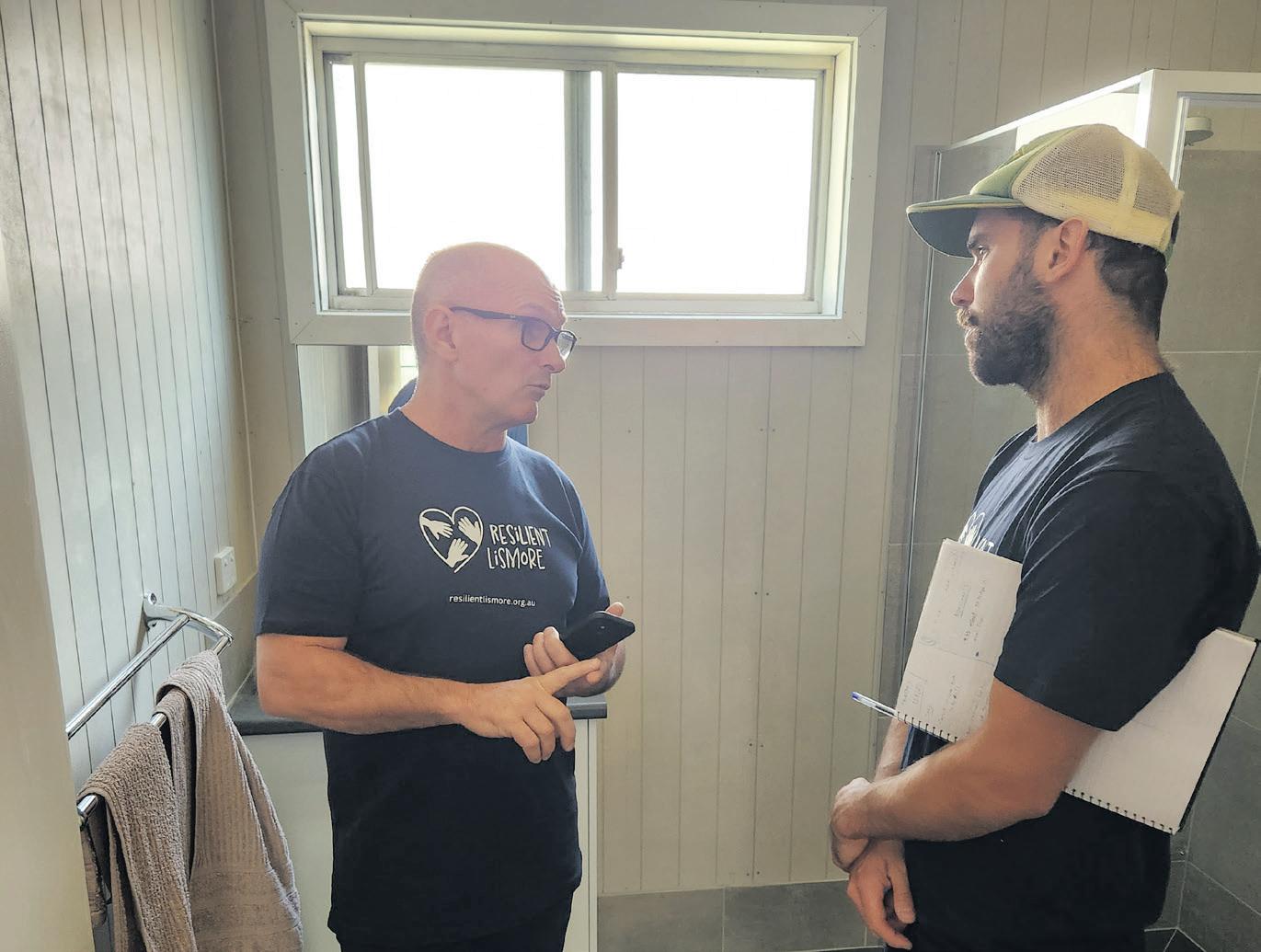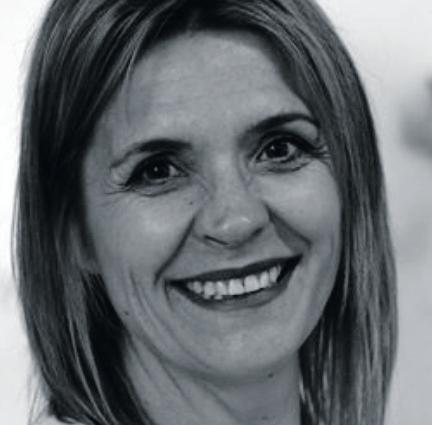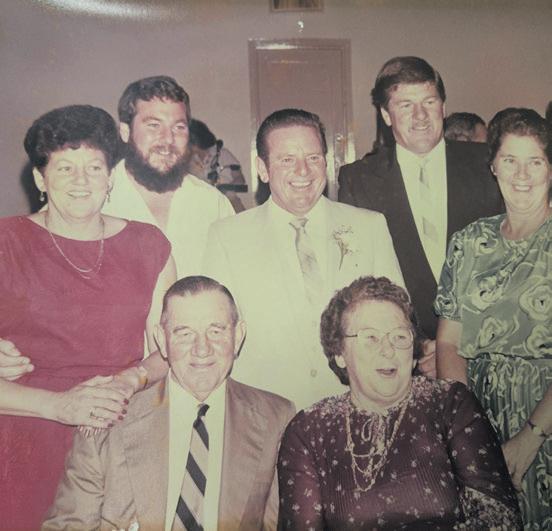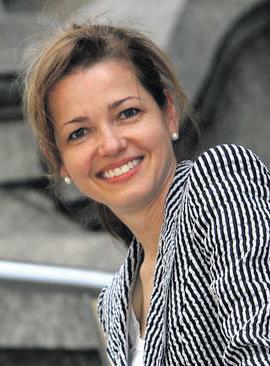
8 minute read
Resilient Lismore receives full ‘Repair to Return’ funding
Resilient Lismore has welcomed the fnalisation of its funding deed with the NSW Reconstruction Authority, which will enable the continuation of its ‘Repair to Return’ program.
Resilient Lismore Executive Director Elly Bird said that in 2024 the organisation is scaling up its ‘Repair to Return’ project to best utilise the $5 million funding.
“Repair to Return was formerly known as the ‘Two Rooms Project’, which used volunteer labour to construct walls in two rooms of badly food-damaged homes,” Ms Bird said.
“Repair to Return has evolved as we have secured funding, and now we engage qualifed tradespeople to do the milestone for us and we extend our gratitude to Premier Minns and his government; to the Emergency Services Minister Jihad Dibb and of course to Janelle Saffn the Member for Lismore who secured and in downstream communities, including Coraki, Woodburn, Wardell, Bungawalbin and others - we have a regional footprint.” Ms Bird said. “We are not doing renovations or total work. Our scope has expanded to provide partial repair of homes, including kitchens, bathrooms and other critical repairs.”

“After nearly two years of our home repair work being privately funded by local organisations and philanthropists we are very grateful that the NSW Reconstruction Authority is providing this additional funding so that we can continue to help people return to safe and secure homes.”
“It’s a signifcant this funding commitment for our work.”
“The Repair to Return program provides qualifed trades assistance to owneroccupiers who were living in the affected property at the time of the disaster and who still need to live there.
“We prioritise people who can’t progress their recovery on their own, we prioritise vulnerable people, and we are trying to help as many people as we can. We work in Lismore rebuilds, but we will help people repair their homes so they have somewhere safe and secure to live. There is a high level of need so there might be a waitlist depending on the situation and the work that is required. We can’t guarantee that we can help everyone but we are doing our best to help as many people as we can.”
“We can provide labour and materials, or we can help people use the materials they already have. We can help to restore essential plumbing; repair and restore kitchens; assist with electrical work; resheet walls; assist with furniture and whitegoods - and more. People just need to talk to us to see
Northern Rivers are on the way back but there is still plenty that needs to be done homes that need to be repaired, people who need assistance, and businesses that need commitment to our community. We are particularly grateful to the local people who have provided signifcant funding to get us to where we are now, and who have helped us to help so many people live in safer housing.”
Amanda Leck, Head of Adaptation, Mitigation and Reconstruction at the NSW Reconstruction Authority, said supporting the Repair to Return program was a practical example of the organisation backing a community-led initiative that clearly works.
“The work in Lismore is not just about buying back homes and rolling out our Resilient Lands Program, it’s about what we can do.

Ms Bird said there was still a mountain of work to do for the Northern Rivers to build back and develop resilience for future events.
“This is a multi-year, long-tailed recovery process,” she said. “We understand that people from outside the region might think, ‘Oh, that was two years ago, it’s all over now’, but that is far from the truth.
“Lismore and the support.
“Resilient Lismore is here for the long haul because this is our community: our staff and volunteers are from this community. We love it, we are here to help the people we live alongside, and we are committed to helping our region not just to survive but to thrive. “We are grateful to the Reconstruction Authority and to our partners and supporters for their ongoing restoring a community and maintaining its unique identity for the long term,” she said.
“We know we can’t stop disasters from occurring, but we can do more to prepare and prevent the worst of their impacts.
“It’s critical we’re better prepared for future disasters with Councils and local community leaders and will develop local Disaster Adaptation Plans that consider all possible options.
A surge in the amount of digital data in the health sector, together with increases in compute power and the availability of new artifcial intelligence (AI) tools are leading to an explosion of AI being used in healthcare, according to a new report from CSIRO, Australia’s national science agency.
The AI Trends for Healthcare report identifes the opportunities and challenges facing the continued and inevitable integration of AI in Australia’s healthcare sector; from clinical decision support to administrative tasks.
Research Director of CSIRO’s Australian e-Health Research Centre (AEHRC), Dr David Hansen said that the use of AI in healthcare is unique because the accuracy of models could mean the difference between life or death, or ongoing health or illness.
“A key difference between the use of AI in healthcare compared to other industries is the use of AI in decision making for prevention, diagnosis, monitoring and treatment,” Dr Hansen said.
“As we strive to create newer and better digital tools to harness the benefts of AI in healthcare, frameworks and ethical implementation along with established safety, quality and monitoring guidelines continue to be imperative.”
The report also notes that the digitalisation of Australia’s hospital records system – or electronic medical records (EMRs) – is rapidly expanding.
EMRs and other clinical systems are likely to provide the platform for implementing AI technologies – with uses in areas such as imaging, diagnosis, and treatment, as well as tasks such as reconciliation of reports or analysis of clinical data.
“There is more health and medical data out there than ever before, so data privacy and security are a growing challenge,” Dr Hansen said.
“AI can play an important role in allowing Australians to have full access to and control over their health data.”
The report identifes that medical research will be a signifcant winner from the digitisation of healthcare and the introduction of AI algorithms, as medical research institutions invest in infrastructure to harness the power of the data being generated.
“We’re at the cusp of an extraordinary era in medicine. For the frst time, machines can provide effcient administrative support for clinicians and education for patients, diagnose and predict disease and inform clinical decision making,” Dr Hansen said.
“If done with care, thought and safety, embedding AI in healthcare is an opportunity to drastically improve the work lives of medical professions and the health and wellbeing of consumers.”
The report highlights other sectors – such as aged care or disability – as also being able to beneft substantially from the improved support and vigilance offered by AI.
“Our research shows the benefts of AI’s capacity for the analysis of large data sets for disease control and for clinical support in high demand such as medical imaging. All of this shows great promise for increasing digital health impact,” Dr Hansen said.












Warwick
LIVESTOCK MARKETS WARWICK & DISTRICT W/E 29/03/2024
The weather and the short processing weeks lead to a reduction of numbers for both the Cattle sale and the Sheep & Lamb sales. Agents saw totals of 687 Cattle and 535 head of Sheep & Lambs for the weekly sales. The Markets were frmer for the fnished heavier articles and were par to a shade easier for the lighter and unfnished types.
Vealer steers av 328.5c/kg topping at 364.2c/kg or $736.12 to $910.50
Vealer heifers av 260.4c/kg topping at 330c/kg or $615.20 to $992.36
Feeder steers av 304.8c/kg topping at 370.2c/kg or $1142.82 to $1807.05
Feeder heifers av 249.6c/kg topping at 329.2c/kg or $851.84 to $1305.50
Yearling steers av 298.9c/kg topping at 380.2c/kg or $1034.92 to $1658.25
Yearling heifers av 262.9c/kg topping at 384.2c/kg or $838.55 to $1748.11
Steers av 289.5c/kg topping at 339.2c/kg or $1640.09 to $2083.24
Heifers av 267.2c/kg topping at 358.2c/kg or $1210.33 to $1612.61
Manufacturing steers av 213.2c/kg topping at 213.2c or $1309.06
Cows av 204c/kg topping at 235.02c/kg or $1097.89 to
$1914.00
Bulls av 243.6c/kg topping at 273.2c/kg or $1651.75 to $2487.50
Sale total of 665 head saw an av of $1066.56 av across the board.
Sheep and Lamb numbers saw a fall with a third of the last weeks numbers.
Lambs topped at $187 to av $100.56 ($2/down) Ewes topped at $87 to av $56.47 ($24 down ) Wethers topped at $75 to av $67.71 ($11 up ) Rams topped at $64 to av $32.06 ($38 down) Lamb rams topped at $100 to av $76.62 ($1 up ) The sale av of $72.39 was $20/ head down. Pork numbers were up slightly with a bigger number of stores.
Sows sold from $175 to $230, Boars sold to $140, Baconers sold to $240, Pork sold from $188 to $238, Light Pork sold to $168, Stores from $40 to $182. Roosters sold to $10, Hens to $8 , Silkys sold to $35, Pullets sold to $27050, Guinea Fowl sold to $20, Ducks sold to $5, Drakes to $7.50, Groups of Guinea Fowl sold to $27.50, Groups of chicks sold to $27.50, Groups of Quail sold to $15
MC DOUGALL & SONS SHEEP & LAMB REPORT
The weather and the Easter break saw the numbers plummet to 535 head from last weeks 2677 head. The yarding was quite a mixture with nearly half the yarding falling into the mutton categories. The lamb side of things was also spread far and wide, with some lambs as light as 15kg up to 58kg. The market for the better fnished trade and export types were frm with the local buyers looking to fll orders. The light weight sales were up and down with the variation due to fnish and type. The mutton market was up and down with the heavier end with fnish frmer , and the lighter ewes and wethers cheaper. Lambs topped at $187 to av $100.56($2 down), Hoggets topped at $87 to av $56.47 ($24 down ), Ewes topped at $54 to av $25.11 ($20 down), Wethers topped at $75 to av $67.71 ($11 up), Rams topped at $64 to av $32.06 ($38 down), Lamb rams topped at $100 to av $76.62 ($1 up ). The sale yarding averaged $72.39 a drop of $20/head week on week.
Rory & Kathy Frost sold Dorper lambs 45.3kg to Leslie Lamb for $158, 44.5kg to Leslie Lamb for $150, 70kg hoggets to Eversons for $80, ewes to Eversons for $40 John & Regina Henry sold Dorper lambs 47kg to Tonys
Supa Meats & Leslie Lamb for $161
Cooinda P/S sold Dorper x lams 44kg to Take IT Easy Meats for $120, hoggets 45.6kg to Eversons for $70, ewes to Eversons for $54
Learoyd Family sold Dorper x lambs 26.6kg and 25.6kg to restockers for $37. and $33, 18kg to restockers for $28
Leon & Sharon Willis sold Dorper lambs 41.3kg to Leslie Lamb for $108, 41.3kg ram lambs to Take IT Easy Meats for $90
Steve & Helen Howard sold Dorper ram lambs 63.3kg to Take IT Easy Meats for $100, 43kg to Take IT Easy Meats for $93
Mc Nulty Bros sold Dorper lambs 42kg to Leslie Lamb for $120, 43.5kg hoggets to Eversons for $87, 41kg 4tooth wethers to Eversons for $75, 60kg wethers to Eversons for $61, 70kg wethers to Eversons for $66, 57kg hogget Rams to Take IT Easy Meats for $86, Rams to restockers for $64, Rams to Whites Trading for $30










